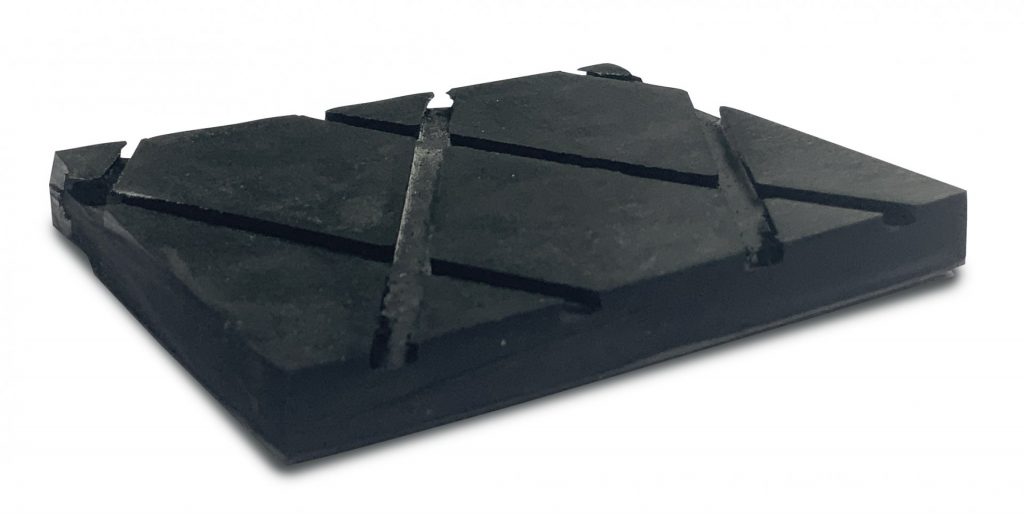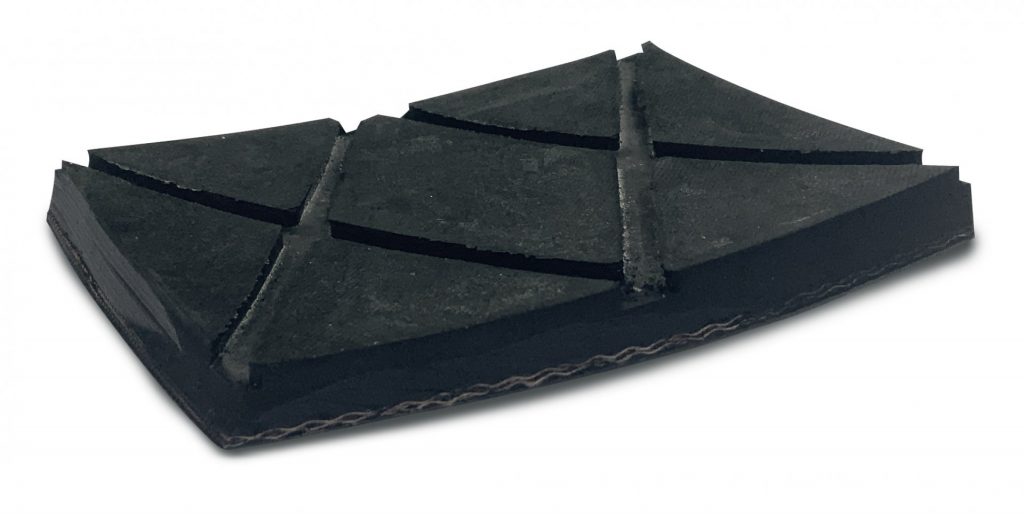The cladding of a conveyor pulley
At Stokman we have been supplying very high quality conveyor belt pulleys and conveyor belt rollers for heavy and medium duty bulk transport for many years. The pulleys that leave our production site in Raamsdonksveer are almost all clad in rubber. In this article we will discuss the advantages of cladding and the different possibilities. Do you have any questions after reading the article? Then please contact us.
Why clad a conveyor belt roller?
The pulleys of a conveyor system are clad for a number of reasons:
- Grip
- Wear
- Efficient use
The main reason is grip. A belt clad in rubber or a combination of rubber and ceramics has, compared to the rubber conveyor belt, a higher friction and therefore a better grip. The slippage of the belt is thus minimised.
Another important reason is wear. Not cladding the conveyor pulley causes uncontrolled wear on the metal pulley body. Controlled wear is easy to observe: the rubber is visually subject to wear. The pulley can be protected before wear occurs by replacing the rubber (re-conditioning). Replacing the rubber is of course much more cost efficient than replacing a complete pulley.
In heavy duty conditions, cladding pulleys is always necessary to enable efficient operation. Heavy duty refers to conveyor belt systems on ships or in the open air, with a high capacity of up to 6000 tonnes/hour. More extreme temperatures and especially (salt) water contribute to tougher conditions. A smooth non-clad pulley on a rubber conveyor belt will cause slippage, and may even cause a fire. This is in addition to the aforementioned uncontrolled wear.
Not every conveyor belt pulley is clad. This has multiple causes, namely budget and application. Not cladding a conveyor belt pulley is an option when low speeds and low capacity are involved. However, as stated earlier, pulleys are not commonly supplied without cladding.
Costs for cladding conveyor belt pulleys
The more durable the cladding, the higher the cost per m2. In many cases, it is not necessary to work with the highest wear resistance. We are happy to perform these calculations for our clients.
The different types cladding for conveyor belt pulleys
Here we will discuss the four most commonly used types of cladding for conveyor belts:
- Mini diamond
- Large diamond
- Large diamond for drive pulleys (2 kevlar layers)
- Rubber with ceramic
Mini diamond
This cladding is 8 mm thick and has a 20×20 mm diamond pattern. The hardness of the rubber we work with is 63° shore. This cladding is mainly used for smaller diameter pulleys, smaller than 400 mm diameter. The reason this cladding is used with smaller diameters is a practical one; the small circumference of a smaller roller requires pliable material, and the 8mm thick material is more pliable than the thicker cladding.

Large diamond
This cladding is 12 mm thick and has a 70×50 mm diamond pattern. We use the same hardness as for the small diamond pattern, namely 63° shore. This cladding is often used on a number of specific pulleys: the tail pulley, snub pulley, bend pulley and tension pulley. These pulleys must be able to carry heavier loads and often have larger diameters, think of diameters from 400 mm to 1500 mm. With these pulleys, flexibility of the cladding is less important, because of the larger diameter. Besides the standard Stokman cladding, it can be made even thicker for longer usability if desired.

Large diamond specifically for drive pulleys
This cladding is the same as with the “large diamond” but has two kevlar layers on the bottom. This is because drive pulleys can be subject to heavier peak loads. This peak load can cause the rubber to come loose from the pulley. By using rubber and two kevlar layers, it becomes uncommon for pulley cladding to come loose. This means the cladding can be used for longer. This cladding is used for drive pulleys and pulleys with a length of more than 2000 mm, because of the stiffness and the higher load which applies to this type of pulley.

Rubber with ceramic
The 63° shore rubber of this cladding is inlaid with ceramic tiles that provide a higher friction value. This cladding is almost exclusively applied to drive pulleys and tail pulleys that are difficult to reach in the installation or when a higher degree of grip is required by the conditions in which the conveyor system operates. This cladding is mainly used in the harshest of conditions, such as with self-unloading dredgers, transhipment vessels or mines in difficult-to-reach areas. This cladding is also often used for very long installations, such as conveyor belt systems that are several kilometres long.

Unique connection between cladding and conveyor pulley
Stokman has developed a unique method that guarantees excellent adhesion between the pulley and the cladding. If you are interested, we would love to get in touch with you and explain this to you personally.
